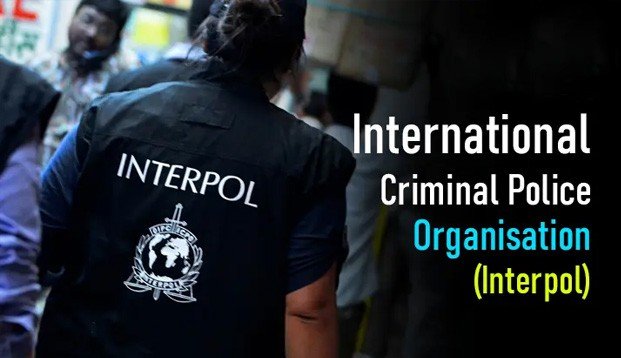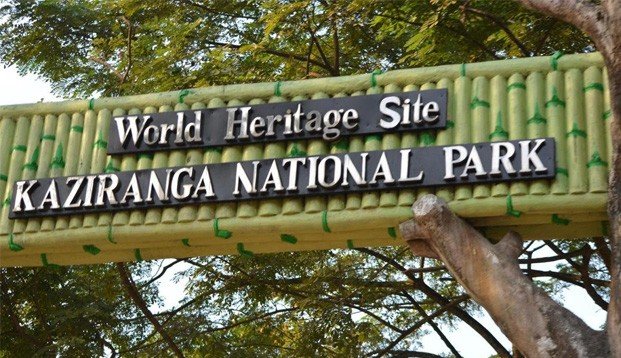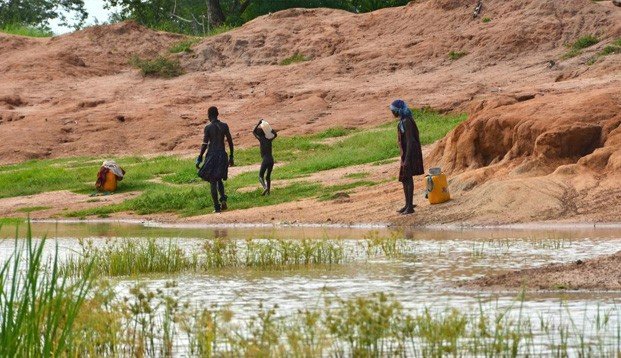23rd February, 2024 (Friday)
| CONTENT LIST | ||
| Topics | Syllabus | |
| 1 | Regional Benches of Supreme Court | GS.2: Indian Polity & Governance |
| 2 | Interpol | GS.2: IR: International Institutions |
| 3 | Raisina Dialogue | GS. 2: IR: India & Global Groupings |
| 4 | Indian National Space Promotion and Authorisation Centre (IN-SPACe) | GS. 3: Indian Economy – FDI investment to Space Sector |
| 5 | National Board for Wildlife (NBWL) | GS.3: Ecology & Conservation |
| 6 | Eradicating Guinea Worm Disease | GS. 3: Science & Tech: Disease in News |
REGIONAL BENCHES OF SUPREME COURT
Syllabus: GS.2: Indian Polity & Governance
Why it’s in the News:. The news discusses a debate surrounding the establishment of regional benches of the Supreme Court in India. The Parliamentary Standing Committee on Personnel, Public Grievances, Law and Justice has recommended setting up such benches across the country. However, the Supreme Court has consistently rejected this idea, and the matter is currently sub-judice.


Need for Regional Benches of the Supreme Court:
- Constitutional Provision (Article 130):
- The Indian Constitution, under Article 130, allows the Supreme Court to sit in Delhi or other places appointed by the Chief Justice of India with the President’s approval.
- This provision indicates foresight for potential regional benches.
- Issues with Centralisation:
- Access to Justice: Centralisation in Delhi poses accessibility issues for people outside the capital, making seeking justice expensive and difficult.
- Case Backlog: Centralised setup leads to a backlog of cases, overburdening the apex court.
- Demand for Regional Benches: Bar Associations, especially from southern India, have demanded regional benches. A Private Member’s Bill was introduced in Parliament supporting this.
- Challenges for Practicing Advocates and Underprivileged:
- Limited Scope: Advocates outside Delhi find it challenging to practice in the Supreme Court, limiting opportunities.
- Access for Underprivileged: Centralisation hinders justice access for underprivileged citizens in remote areas, contradicting Article 39A of the Directive Principles.
- Existing Regional Benches in High Courts:
- Establishment: High Courts like Madras, Bombay, and Guwahati have regional benches, recommended by the Jaswant Singh Commission.
- Supreme Court’s Response: Despite recommendations, the Supreme Court has declined setting up regional benches.
- Arguments For and Against Regional Benches:
- For: Increasing judicial capacity, ensuring equal access to justice, and addressing the backlog of cases.
- Against: Concerns about diluting the Supreme Court’s authority and high infrastructural costs.
- Regional Benches vs Virtual Courts:
- Alternative Proposal: Some suggest virtual courts as a cost-effective solution to decentralisation, addressing the challenges of a centralised system.
- Conclusion:
- Need for Decentralisation: With nearly 70,000 pending cases, there’s a pressing need for regional benches to ensure speedy and fair justice delivery.
- Call to Action: Encouraging the establishment of regional benches, physical or virtual, across all zones is vital for an efficient apex judiciary.
INTERNATIONAL CRIMINAL POLICE ORGANISATION (INTERPOL)
Syllabus: GS.2: IR: International Institutions
Why it’s in the News: The article revolves around the operations and potential misuse of Interpol’s notice system, particularly focusing on the issuance of blue corner notices. Interpol, as the International Criminal Police Organization, serves as a vital platform for member countries to share critical crime-related information and collaborate in combating transnational crimes.


About INTERPOL
- Background:
- Origin: Established in 1923 as the International Criminal Police Commission (ICPC) after the first International Criminal Police Congress in 1914.
- Revival: Reconstituted in 1946 as the International Criminal Police Organization (ICPO) post-World War II.
- Name Change: Renamed INTERPOL in 1956 with headquarters in Lyon, France.
- Membership:
- Comprises 194 member states, including India since 1956.
The Central Bureau of Investigation (CBI) is the nodal police agency in India which coordinates investigations on behalf of Interpol Member countries.
- Structure:
- General Assembly: Supreme governing body convening annually with member country representatives, making decisions through resolutions.
- General Secretariat: Manages day-to-day operations, led by the Secretary General, coordinating with National Central Bureaus (NCBs) worldwide.
- National Central Bureaus: Each member state hosts an NCB, serving as a central point for communication and cooperation.
- Objectives:
- Mutual Assistance: Foster cooperation among criminal police authorities within legal bounds.
- Crime Prevention: Establish and enhance institutions to prevent and suppress ordinary law crimes.
- Non-Political: Prohibited from engaging in activities of political, military, religious, or racial nature.
- Functions:
- Database Management: Maintains 18 police databases containing crime and criminal information accessible to member countries.
- Investigative Support: Offers forensic analysis, fugitive location assistance, and other investigative services.
- Focus Areas: Combats terrorism, cybercrime, and organized crime, supporting national efforts globally.
- Research and Development: Conducts studies on international crime trends and developments.
- Operations:
- No Law Enforcement Powers: Lacks authority for arrests; facilitates information exchange and requests between member nations.
- Request Handling: Processes requests from member countries, disseminating information as per court orders or legal mandates.
- Conclusion:
- INTERPOL serves as a vital platform for global police cooperation, leveraging its structure, objectives, and functions to combat transnational crime effectively. Despite lacking law enforcement powers, its role in information exchange and support services significantly contributes to crime control efforts worldwide.
THE RAISINA DIALOGUE
Syllabus: GS. 2: IR – India & Global Groupings
Why in News: At the Raisina Dialogue, External Affairs Minister S. Jaishankar emphasized India’s role as a “bridging power,” balancing multilateralism with national interests.


About the Raisina Dialogue
- The Raisina Dialogue is India’s premier conference on geopolitics and geoeconomics committed to addressing the most challenging issues facing the global community.
- Every year, leaders in politics, business, media, and civil society converge in New Delhi to discuss the state of the world and explore opportunities for cooperation on a wide range of contemporary matters.
- The Dialogue is structured as a multi-stakeholder, cross-sectoral discussion, involving heads of state, cabinet ministers and local government officials, who are joined by thought leaders from the private sector, media and academia.
- It is organized by Ministry of External Affairs in collaboration with Observer Research Foundation (ORF).
- This effort is supported by a number of institutions, organisations and individuals, who are committed to the mission of the conference
- Inspiration:
- Inspired by the spirit of Singapore’s Shangri-La Dialogue, Raisina aspires to cultivate a similar platform for multifaceted deliberations on global challenges.
- Significance: Echoing India’s Voice
- Strategic Vision: At its core, the Raisina Dialogue serves as a strategic projection of India’s perspectives on global dynamics.
- India-Centric Thinking: Embracing the ethos of ‘India First,’ the dialogue articulates India’s narrative, amplifying its role as a key player on the global stage.
- Diverse Representation: By weaving together a tapestry of voices from around the world, Raisina promotes a rich tapestry of ideas, fostering critical reflections on international policies.
- Conclusion
- The Raisina Dialogue attracts leaders from over 100 countries to address shared concerns, with prominent figures such as Greece’s Prime Minister and Italy’s Prime Minister participating, thereby amplifying its global influence.
- It embodies India’s dedication to shaping global discourse through inclusive collaboration, offering hope for a more interconnected and harmonious world.
Top of Form
INDIAN NATIONAL SPACE PROMOTION AND AUTHORIZATION CENTRE (IN-SPACE)
Syllabus: GS. 3: Indian Economy – FDI investment to Space Sector
Why it’s in the News: The editorial emphasizes India’s recent reforms aimed at opening up its space sector to private companies. These reforms include the establishment of the Indian National Space Promotion and Authorization Centre (IN-SPACe) and the liberalization of foreign direct investment (FDI) regulations. The decision to allow up to 100% FDI in certain space-related activities is seen as a strategic move to bolster India’s position as a space power and compete with China, which faces constraints due to its belligerent foreign policies.


Indian National Space Promotion and Authorization Centre (IN-SPACe)
- IN-SPACe is a single-window, independent nodal agency within the Department of Space (DOS), established as part of space sector reforms.
- Its primary objective is to facilitate and regulate the participation of private entities in India’s space sector.
- Mandate:
- Promotion: IN-SPACe promotes and enables various space activities for non-governmental entities (NGEs), including the development of launch vehicles, satellites, and space-based services.
- Authorization: It authorizes and supervises space activities undertaken by NGEs, ensuring compliance with regulations and standards.
- Interface: Acts as an interface between ISRO and NGEs, facilitating collaboration and resource utilization.
- Infrastructure Sharing: Facilitates the sharing of space infrastructure and premises controlled by DOS/ISRO.
- New Infrastructure: Supports the establishment of new space infrastructure and facilities, fostering growth and innovation.
- Functions:
- Assessment: Evaluates India’s space resources and assesses opportunities for increased space-based activities.
- Needs Analysis: Identifies the requirements of private players, including educational and research institutions, and works with ISRO to accommodate these needs.
- Consultation: Engages in consultation with ISRO and other stakeholders to ensure alignment with national space objectives.
- Conclusion:
- IN-SPACe plays a crucial role in promoting collaboration, fostering innovation, and expanding India’s presence in the global space arena by effectively leveraging public-private partnerships and facilitating the growth of the domestic space industry.
NATIONAL BOARD FOR WILDLIFE (NBWL)
Syllabus: GS. 3: Ecology & Conservation: Important Bodies in News
Why it’s in the News: The National Board for Wildlife (NBWL) has approved an elevated road over nine corridors used by the animals of Kaziranga National Park and Tiger Reserve (Assam), usually during heavy floods.


National Board for Wildlife (NBWL)
- The National Board for Wildlife (NBWL) is a pivotal institution established by the Central Government under Section 5 A of the Wildlife (Protection) Act, 1972 (WLPA).
- It succeeded the Indian Board for Wildlife, which had its inception in 1952, marking a significant evolution in wildlife conservation governance in India.
- Composition:
- Comprising 47 members, the NBWL is chaired by the Prime Minister of India.
- The Standing Committee, formed at the discretion of the National Board, includes the Vice-Chairperson (Union Minister in charge of Forests and Wildlife), the Member Secretary (Additional Director General of Forests (WL) & Director, Wildlife Preservation), and a maximum of ten members nominated by the Vice-Chairperson from the NBWL.
- Membership encompasses 3 parliamentarians (two from Lok Sabha and one from Rajya Sabha), 5 representatives from Non-Governmental Organizations (NGOs), 10 distinguished conservationists, ecologists, and environmentalists, along with government secretaries from various departments, the Chief of Army Staff, the Director General of Forests, and other relevant authorities.
- Advisory Role:
- Functioning primarily in an advisory capacity, the NBWL provides guidance to the Government of India (GOI) on matters pertaining to wildlife and forest conservation and development.
- Constitutional Mandate:
- In accordance with the provisions of the WLPA, upon the formation of a new government, the constitution of a fresh NBWL becomes imperative, with the Prime Minister serving as its chairperson.
- Regulatory Authority:
- The WLPA entrusts the NBWL with significant authority, stipulating that critical decisions such as the construction of tourist lodges, modifications to Protected Area boundaries, habitat destruction or diversion, and the de-notification of Tiger Reserves require prior approval or recommendation from the NBWL.
Top of Form
ERADICATING GUINEA WORM DISEASE
Syllabus: GS. 3: Science & Technology: Disease in News
Why it’s in the News: The world is on the brink of a public health triumph as it closes in on eradicating Guinea worm disease. There were more than 3.5 million cases of this disease in the 1980s, but according to the World Health Organization’s (WHO) weekly epidemiological report, they dwindled to 14 cases in 2021, 13 in 2022, and just six in 2023.


Photo Credit: The Hindu & AP
About Guinea Worm Disease
- Guinea worm disease, also known as dracunculiasis, is a debilitating condition caused by the parasite Dracunculus medinensis.
- Contracted through the consumption of contaminated water, the disease manifests with painful blisters and ulcers, typically affecting the lower extremities.
- Progress Toward Eradication
- Remarkable strides have been made in combatting Guinea worm disease, with reported cases plummeting from over 3.5 million in the 1980s to a mere six cases documented in 2023. This signifies significant global progress and heralds the possibility of eradicating the disease altogether.
- Effective Strategies in Disease Control
- Key strategies in the fight against Guinea worm disease have revolved around fundamental public health principles. These include ensuring access to clean water, imparting health education, and fostering community participation. Interventions such as larvicide treatments, water filtration distribution, and robust surveillance have proven instrumental in containment efforts.
- The Absence of a Vaccine
- Unlike many infectious diseases, Guinea worm disease lacks a vaccine due to its parasitic nature. Consequently, eradication efforts focus on preventative measures such as enhancing water safety protocols and community awareness initiatives.
- Persistent Challenges
- Despite dwindling case numbers, challenges persist, notably the discovery of the parasite in animal reservoirs like dogs in Chad, complicating eradication endeavors. Socio-political factors such as civil unrest and poverty further impede progress in affected regions.
- The Vital Role of Community Health Workers
- Community health workers are pivotal in the campaign against Guinea worm disease. They play a vital role in community education, distribution of water filtration systems, and facilitating case detection and management, thus significantly reducing disease transmission.
- Community Benefits of Eradication
- The eradication of Guinea worm disease promises immense benefits to affected communities, alleviating significant suffering and economic strain. Moreover, it underscores the efficacy of global health initiatives and underscores the importance of addressing health inequalities for improved societal well-being.
- Lessons Learned and Future Implications
- The near-eradication of Guinea worm disease underscores the potency of basic public health interventions, the value of community engagement, and the impact of sustained global health efforts. It serves as a beacon of hope, demonstrating that even diseases lacking high-tech solutions can be conquered through determination and international collaboration.
- Conclusion:
- A Testimony to Human Resilience The imminent eradication of Guinea worm disease stands as a testament to the indomitable spirit of human endeavor in the face of adversity. Through unwavering commitment and collective action, the global community inches closer to achieving a world free from the shackles of this debilitating illness, offering renewed hope for a healthier and more equitable future.


